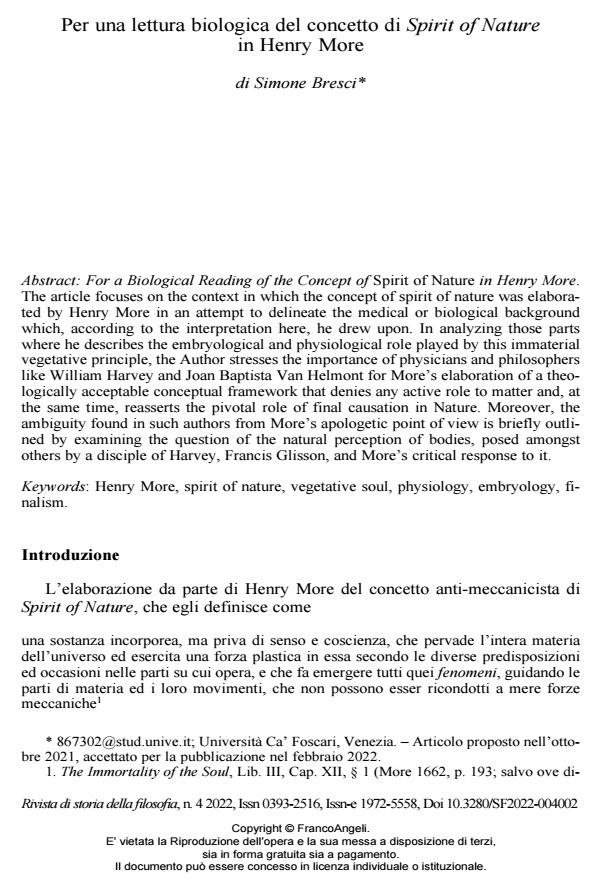For a Biological Reading of the Concept of Spirit of Nature in Henry More
Journal title RIVISTA DI STORIA DELLA FILOSOFIA
Author/s Simone Bresci
Publishing Year 2023 Issue 2022/4
Language Italian Pages 34 P. 629-662 File size 327 KB
DOI 10.3280/SF2022-004002
DOI is like a bar code for intellectual property: to have more infomation
click here
Below, you can see the article first page
If you want to buy this article in PDF format, you can do it, following the instructions to buy download credits

FrancoAngeli is member of Publishers International Linking Association, Inc (PILA), a not-for-profit association which run the CrossRef service enabling links to and from online scholarly content.
The article focuses on the context in which the concept of spirit of nature was elaborated by Henry More in an attempt to delineate the medical or biological background which, according to the interpretation here, he drew upon. In analyzing those parts where he describes the embryological and physiological role played by this immaterial vegetative principle, the Author stresses the importance of physicians and philosophers like William Harvey and Joan Baptista Van Helmont for More’s elaboration of a theologically acceptable conceptual framework that denies any active role to matter and, at the same time, reasserts the pivotal role of final causation in Nature. Moreover, the ambiguity found in such authors from More’s apologetic point of view is briefly outlined by examining the question of the natural perception of bodies, posed amongst others by a disciple of Harvey, Francis Glisson, and More’s critical response to it.
Keywords: Henry More, spirit of nature, vegetative soul, physiology, embryology, finalism.
Simone Bresci, Per una lettura biologica del concetto di Spirit of Nature in Henry More in "RIVISTA DI STORIA DELLA FILOSOFIA" 4/2022, pp 629-662, DOI: 10.3280/SF2022-004002